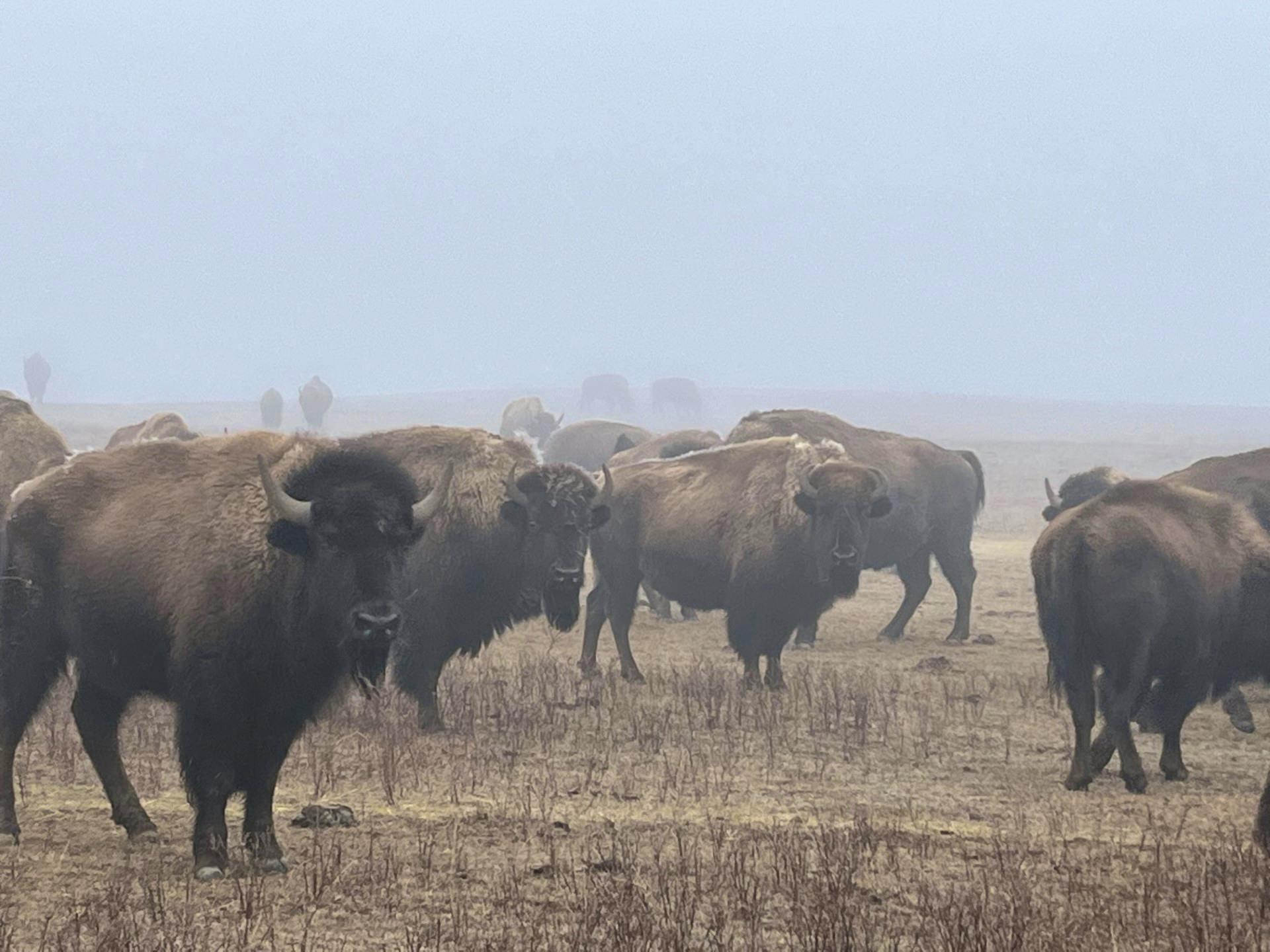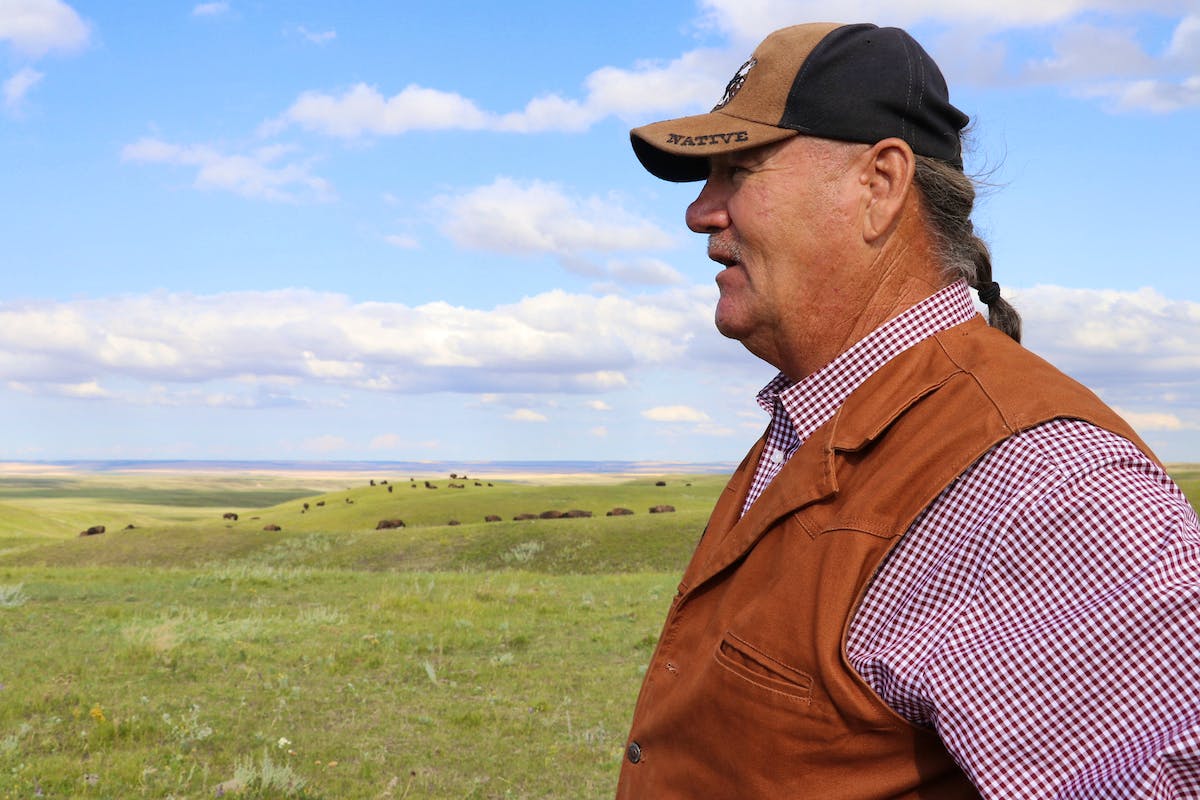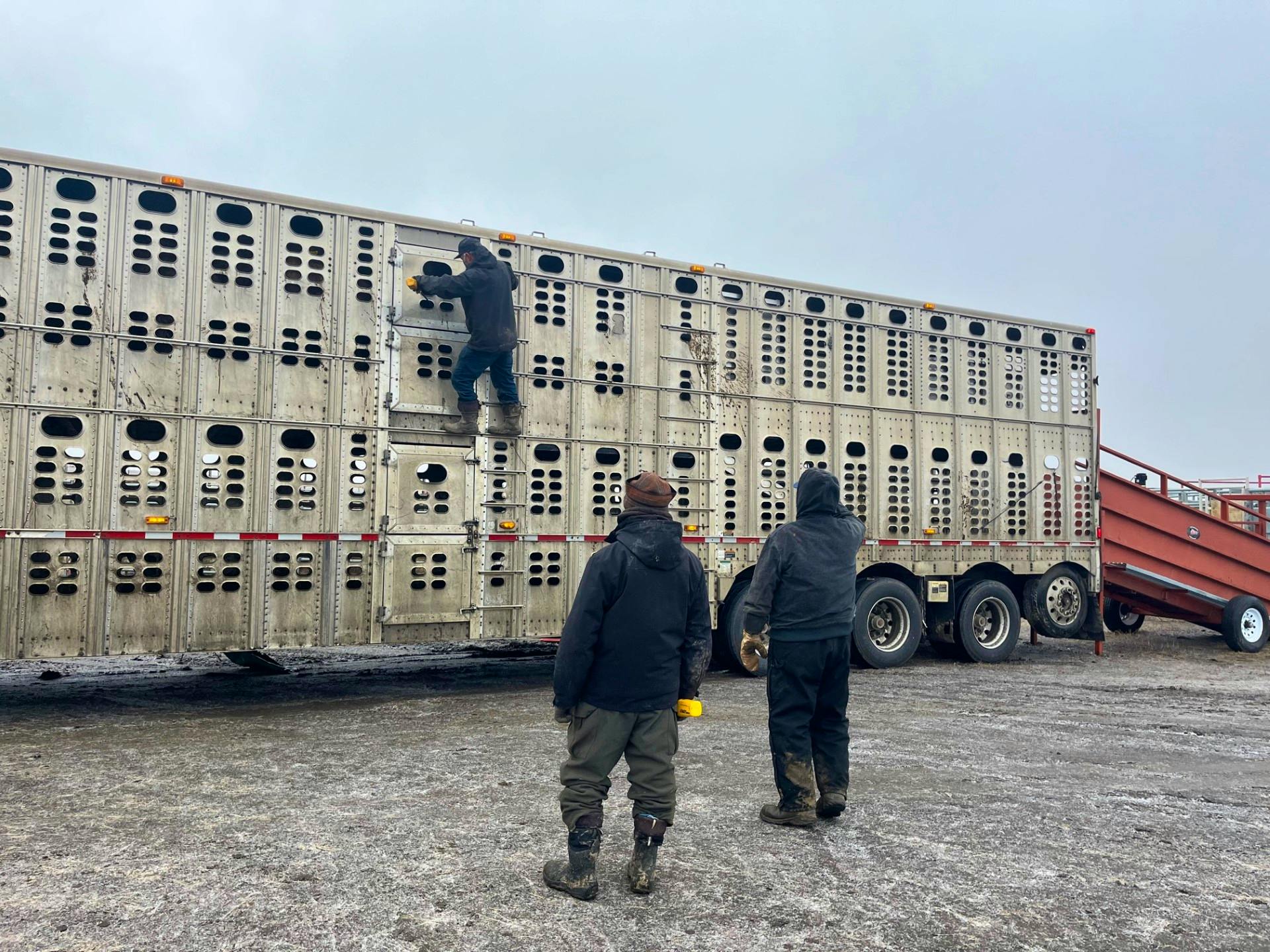The Road to Conserving Native Plains Wildlife
It was “zero-dark thirty,” as we say when leaving before dawn to head out to a field project. I anxiously anticipate this trip each winter: moving wild bison from Yellowstone, 500 miles to the Fort Peck Indian Reservation in Montana. The best part is knowing the animals will be used to establish cultural herds on Tribal lands.
The Yellowstone Bison Conservation Transfer Program (BCTP) is centered on helping Native American communities restore their buffalo populations. Called Tatanka in Lakota and Iinnii in Blackfeet, the return of bison — culturally and ecologically to the plains — is an important initiative for Defenders of Wildlife. For the program I lead the coordination and transportation efforts, including hiring the trucks and drivers from the Blackfeet Tribe.
I also work closely with partners, including Robbie Magnan, member of the Assiniboine and Sioux Tribes and director of the Fort Peck Game and Fish Department. I have worked with Robbie for nearly seven years, together advocating for the Fort Peck Tribes to receive Yellowstone bison under the BCTP. I have also helped Robbie with the management of Fort Peck’s cultural herd. Our cooperation involves helping the Tribes acquire and connect lands for bison habitat along with providing wildlife-friendly perimeter fencing for the growing herd.
For many years now, the BCTP partners have moved bison from Yellowstone to Fort Peck and then to Tribes across the West, even as far north as Alaska. Since 2019, the BCTP has transferred 414 bison to Fort Peck. With 2024 marking the sixth year of the BCTP, we hit an exciting milestone this winter. We moved 116 bison over three days, the largest number of bison to date. This is double what we have transferred in years past!
A Test Before Leaving Yellowstone
Bison are abundant in Yellowstone National Park. Every year, a portion naturally migrate out of the park borders and become eligible for the BCTP program. Before we can arrange for their transportation though, they must undergo brucellosis testing, a disease that causes the animals to abort their young. Brucellosis is largely transmitted from elk to cattle, but bison can also contract it. Containing and testing for the disease in the Greater Yellowstone Area is important to protecting cattle populations and is mandated by the U.S. Department of Agriculture for the economic security of the U.S. beef industry.
Once the bison pass the brucellosis testing, a federal-Tribal agreement allows them to then be shipped to Fort Peck. The Fort Peck quarantine facility is the final phase, as Robbie says, “to get live buffalo out of Yellowstone.”
From Yellowstone to Fort Peck
Just before I headed out in my truck to the load site, I checked the weather forecast on my cell phone: sunny with a high of 48 degrees. It’s going to be a good day to move them, I thought as I drove through Paradise Valley, Montana. The full moon was just setting behind the snowcapped peaks of the Absaroka Range. About 20 miles to the bison. Right on time.
We loaded 29 yearling bulls in both the upper and lower deck of the semi-truck at first light without a problem. An additional two stock trailers transported ten large bulls.
Our caravan of trucks headed out of the Gardiner Basin. I had butterflies knowing I was once again following the semi loaded with the most precious cargo. From there, we drove for hours and hours, chasing daylight. It was important to reach the drop-off site before sunset so we would not have to unload them in the dark.
Hours later, as the caravan turned off the county road onto a long dirt road, I saw bison poop dotting the landscape. The Assiniboine and Sioux Tribes have dedicated a 300-acre pasture to the BCTP at Fort Peck Reservation. They also manage upwards of 400 Yellowstone bison on 17,000 acres of their lands dedicated to their own cultural herd.
Our semi-truck moved slowly down the steep hill. I was relieved it was not icy at all this year. After backing up the trailer to the loading ramp, the Blackfeet drivers jumped out, and Robbie’s fish and game wardens and I took our positions on the sides of the semi. We use horse training flags to coax the animals to move out and down the ramp into round pens, which then lead them out on the prairie. “Yaw, yaw!” repeated by the Blackfeet drivers hoping to get the bison to move.
The ramp, which is dark even in daylight, seems to be perceived as unsafe passage to the bison. However, it usually just takes one brave bison to take the first steps and then the others follow. Hooves loudly hit the steel floor as they dash down the ramp, one by one through the alleyway and then darting, like hopping with all four legs in the air out onto the open prairie. Happy bison.
Fort Peck and Beyond
Here at Fort Peck the bison will live temporarily, grazing on nutritious grasses and forbs, acting like wildlife. Robbie manages them in a large open pasture while they undergo the final round of brucellosis testing, according to the disease management protocols. Then after testing, the bison can receive clearance from USDA-Animal and Plant Health Inspection Service to take their final trip out-of-state to a receiving Tribe that agrees to manage the bison as wildlife. By this time next year, these bison could be on their journey home.
With happy bison out of the trailers and in their temporary prairie land, our work was done with this transfer. As we warmed up in the mobile trailer on the site, we reveled over this monumental feat and ate home-cooked chili together. Jonny BearCub Stiffarm, leader of the Fort Peck Pte (Buffalo) Group, said to me about receiving bison, “It’s our story. How we bond as a community, learning and experiencing again, for our people, the buffalo.”













Follow Defenders of Wildlife
facebook bluesky twitter instagram youtube tiktok threads linkedin